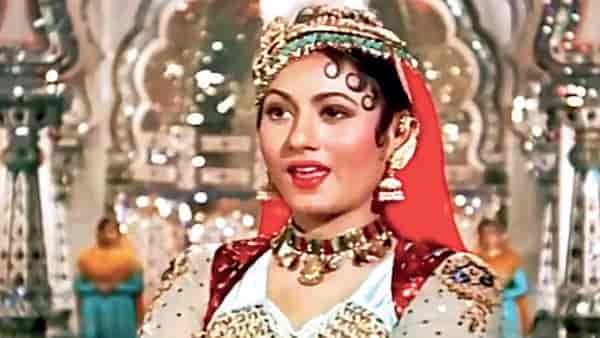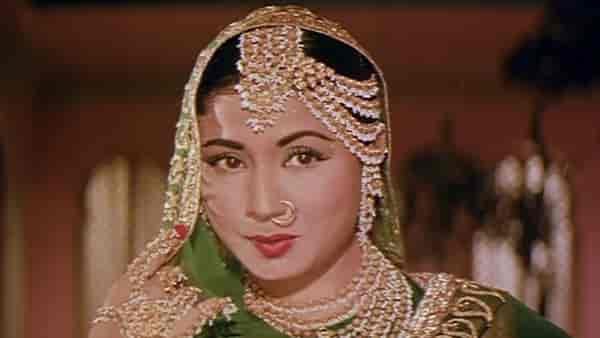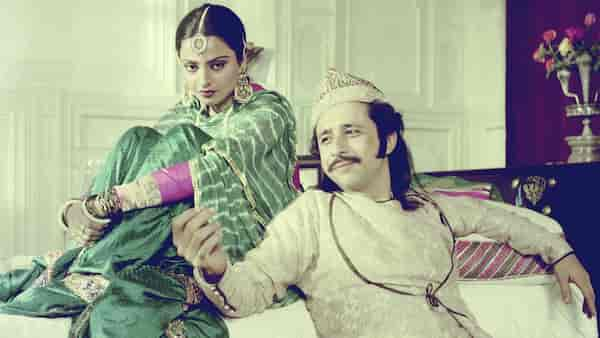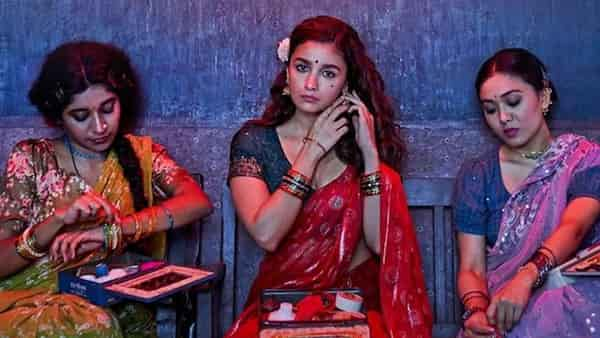Tawaif Talkies: The Courtesan In Hindi Cinema, From Mughal-e-Azam To Heeramandi
With Sanjay Leela Bhansali’s Heeramandi, his latest memorial to courtesans of yore, it’s timely to situate the tawaif in the context of Indian history and the cinema that has tried to interpret it.

Last Updated: 07.48 PM, May 09, 2024
This column was originally published as part of our newsletter The Daily Show on May 9, 2024. Subscribe here. (We're awesome about not spamming your inbox!)
***
IN a scene from BR Chopra’s Tawaif (1985), a female writer, working a novel about the life and times of a courtesan, tenders her idea of female subjugation. “Har aurat ek tarah ki tawaif hi toh hai,” she says, in a grim generalisation of womanhood. A woman’s life, this writer argues, is about selling herself to the court of public opinion. If it’s on stage, it amounts to scandal, but if it’s hidden behind the sheets of prestige, it’s culture. A woman’s existence, therefore, is transactional by design. She must first forego, in order to be able to own. With the release of Sanjay Leela Bhansali’s Heeramandi on Netlfix, the latest in his long line of memorials to the courtesans of yore, it’s important to situate the figure in the context of both the country’s history and the cinema that has tried to interpret it.

The courtesan has been referred to by different titles in different corners of the country. For example, tawaif in the north and devadasis in the south. Reduced to exotic readings, and denied their place alongside the royalty they served, the spectre of the courtesan was uncorked post-Independence. In Mughal-E-Azam (1960), K Asif offered the courtesan her most audacious stage yet; as the regent, over whom two wilful men (read states) argue the nature of morality, citizenship and rights. To post-independence India, Asif’s magnum opus represented its first modern rift with tradition. As much as it was about love, the film also serves as that metaphorical appeal for inclusivity, for relocating the fringes of forgotten history. A fringe that Anarkali (Madhubala), defiantly pushes towards the centre.

Asif’s collaborator on Mughal-E-Azam, Kamal Amrohi would revisit the courtesan in Pakeezah (1972), a largely brothel-set story about an indignant patriarch’s long-drawn moral defeat. The palatial setting, the scale of history is replaced by a barren sense of space and self… except for the modern brothel (kotha). Unlike the painful dullness of elite dwellings, Amrohi’s kotha represents a place where candour and beauty thrive without the trappings of stigma. If the rest of the film’s setting is an infertile painting, the kotha is where colours seem to arrive — jaded, overlooked, but hopeful. Compared to the men, who occupy far-off places, there is a sense of ease in this setting. A place where women (including the stunning Meena Kumari) can chatter, laze, romanticise and romance without abandon. Compare it to the economy of the average domestic household, the general surveillance of space.
In Muzaffar Ali’s Umrao Jaan(1981), Umrao, played by the stunning Rekha, falls for a petulant and naïve young Nawab. When stigma weighs down on his shoulders, he buckles down and retreats. Umrao then finds comfort in the grounded but ill-groomed Faiz (Raj Babbar). From the love-at-all-cost designs of Asif’s epic a young India seems to have moved to reconsidering its bloated moral borders. The courtesan can amble in the courts of love, but never quite call it home. Her sexuality is deliberately laced with the kind of glittery elegance that makes it improbable to consider her a being of flesh. Her sexuality is deadened by the need to also preserve her from a certain gaze. A gaze that Sanjay Leela Bhansali has opted to change and challenge at the turn of the 21st century.

Consider the courtesan through the matrices of contemporary society and she appears to be at the intersection of humanity’s most delicate debates. It explains why, for a couple of decades starting in the ‘60s, courtesans held Hindi cinema in thrall. Partly because of the restrained voyeurism; of a young India looking to an idiom to make sense of its most perverse realities. But also because women in the know of men, who crave nothing but power over them, understand as much of their strength as they do of their weaknesses. Courtesans have therefore fought wars, usurped kings, unseated colonial powers, and shaken whatever monosyllabic men as formidable as Akbar swore by. It’s not the stomach, maybe, that’s the key to a man’s heart after all. It explains why in Bhansali’s Gangubai Kathiawadi the modern courtesan holds her own, even in the midst of a Bombay overrun by testosterone-driven men. As someone who has learned to prevent the heart from wandering into the mind’s kitchen. In the little-known, but underrated Dil Dosti Etc, a junkie theorises about a prostitute he has fallen in love with: ‘a woman who offers her flesh to everyone, can’t possibly offer her heart’. But when she does, it’s possibly the purest form of love there is.

The courtesan sits at the crossroads of a lot that is painful, ironic and absurd about Indian society. For a culture as sexually repressed yet voyeuristic, she represents a viewing point from which all of this moral congestion feels like a thread of belief, loosely held between the teeth of a warning. A warning that should the truth be spoken, everything will collapse. There is therefore an earnestness to acknowledging the tawaif as both the symptom of the malaise and the keeper of our conscience. To excavate her from the pits of history and placing her on a pedestal from which her body ceases to be her only story. Because all she has done is conduct the brazen, unrelenting reality of the world while we, the pseudo-tawaifs, continue to perform our lives with petty — albeit clothed — forms of discrimination and dysfunction.
Stream Pakeezah and Mughal-e-Azam on ShemarooMe. Heeramandi is available on Netflix.

 Premium
Premium